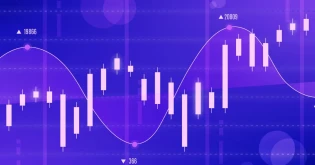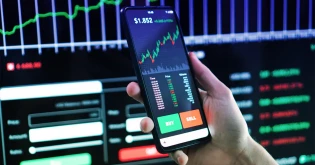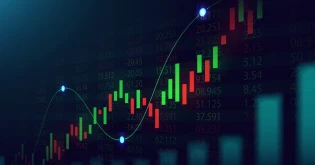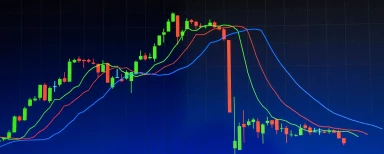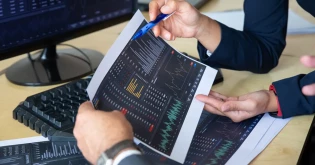-
Latency is one of those important considerations that are often not spoken about much in online Forex trading. It does not matter whether you are a retail trader, a novice, or a professional trader; some milliseconds of latency can affect the execution of trades and profits bagged by you. To give time latency its apt appreciation, one must admit time is money in this fast-moving world of Forex trading.
For a Forex trader-(that is to say, any one person who owns a trading account and actively trades), the distance between where your broker resides and where you do is eventually defined by max time your trading orders (from your terminal) take to reach your broker’s server at any point during your dealing life-cycle of place order-fill order-exit order.
Today, in this blog, we will explore the outline of latency concerning forex trading and how you can improve your trading, while minimizing latency through splitting service with forex VPS, thus aiding your general forex trading performance.
What is Latency in Forex Trading?
Latency is the time lag in time between when you execute a trade and when the trade is displayed in the forex market. The time lag is due to the time it takes for data to travel from your trading platform software, such as MT4 trader or MT5, sent from you to the broker's server, and then to the market to buy or sell. In the forex market, where currency prices move incredibly fast, even 1 millisecond is the difference between profit and loss.
Why Latency Matters
Forex trading runs on the vitality of speed and accuracy. High latency implies:
- Slippage: When you trade at a price different from what you intend, owing to delays.
- Missed Opportunity: Due to slow executions, you might just miss those precious moments of advantageous price movements.
- Higher Costs: Delays might put you in an unfavorable position with spreads or with trading costs.
Low latency means that you execute your trades almost in real-time, hence enhancing accuracy and profits.
Why Latency Matters in Forex Trading
Latency is especially important for platforms like MT4 Trader and MT5, as you will likely be opening trades now of entry, and waiting on the execution may mean missing out on a profit. The forex market moves so quickly if that you miss the time to process the order, you may not have the time to get the order at the price you wanted.
Impacts of High Latency:
- Slippage: In this phenomenon, your trade is executed at an unfavourable rate.
- Re-quotes: It may request you to approve a new rate from time to time.
- Missed Opportunities: A delay in execution may keep you from entering or exiting trades in time.
- Frustration: The high latency will make slow work of your entire trading strategy, especially if you employ scalping or high-frequency techniques.
Low Latency in Forex Trading
In Forex trading terminology, and with regards to low latency, it means there is little delay on orders when they travel to the market. Currency pairs can have changes as small as fractions of a second, so latency-free is the best thing among traders. Low latency is especially good for scalping and high-frequency trades when trades are executed fast and fast with a lot of trades.
Benefits of Low Latency
- Improved Trade Execution: Orders get filled quicker, and the risk of an adverse price movement, called slippage, is hence reduced.
- Enhanced Market Access: Faster connections enable traders to seize brief opportunities.
- Competitive Edge: It is less of an edge in low latency, where timing is everything.
High-speed Internet, optimized platforms, and special hosting services are the common low-latency tools used by traders.
Why Traders Use VPS for Forex Trading
In trading forex, there is a VPS that is, in essence, a computer located away from the broker's place of work. It ensures a 24/7 run time for your trading platform. Such a VPS is beneficial in trading to ensure your orders are executed without delay, while an interruption from a local hardware site or internet connection is pretty much prevented by the local site.
Here’s why using a VPS can reduce latency:
Any Forex VPS server is located at various locations near major financial data centers.
- Stable Internet Connection: This eliminates any instances of disconnections or lag.
- Continuous Operation: Keep your MT4/MT5 trading platform running even when your personal computer is turned off.
These Forex VPS servers work best in automated trading systems like Expert Advisors or EAs, where zero downtime and fast execution are key.
Benefits of Low-Latency Forex VPS Hosting
The low-latency forex VPS hosting is tailor-made to cater for forex traders’ needs. These hosting options are setup such that your trades reach the servers of your broker as fast as possible.
Key Benefits:
- Improved Trade Execution: Small delays also translate to small chances of re-quotes and slippage.
- Enhanced Security: A VPS environment can support the utmost data protection measures and firewall settings.
- Greater Uptime: 99.9% uptime is what almost every VPS provider will promise. This, therefore, means that your platform is up even with the local outages.
- Accessibility: You can access your trading terminal from anywhere across the globe without the performance being compromised.
While choosing the best forex VPS hosting, do ensure that the provider is geographically close to your broker’s servers, offers support for the MT4/ MT5 platforms, and has good technical support service.
How to Optimize Latency in Forex Trading
01. Choose the Right Broker
Make sure your broker has server locations near any significant financial hub. It will ensure the highest rate of trade if the infrastructure has low latency.
02. Use a Reliable Trading Platform
Speed and reliability are what make the MT4/MT5 platforms so famous. Ensure you update your platform from time to time to leverage a performance improvement.
03. Invest in a Forex VPS
Low–latency VPS seems to be the most efficient solution to the minimization of the delay. A good broker like CapitalXtend, which has servers around the world and has an exceptional reputation, is the best.
04. Optimize Your Internet Connection
Although VPS will take care of half of the connectivity issue, you would want a good, stable connection from your end from the get-go. Select the speediest, wired connection available. eliminate all the possibility of dropout.
05. Monitor Latency Regularly
Use instruments to measure latency between a trading platform and a broker server. This would ensure that all the suspected problems are identified before they destroy your trades.
Real-World Example: Why Low Latency Is Crucial
In some instances, when the NFP is released, EUR/USD forex trades can move 50 pips in seconds. Secondly, considering the VPS latency of 20ms mentioned and a trader putting on a trade, it will probably execute two or three pips away from where the trader wanted to enter. Rather, if the latency is 1ms, the trader has excellent execution of 1-2 pips, translating into $30-$50 per lot.
This adds up to thousands of dollars, depending on how many lots have been traded during a month.
How CapitalXtend Helps Reduce Latency
CapitalXtend provides the latest technology infrastructure, specializing in professional traders. The platform provides you with fast access to ultra-low latency servers and failsafe connectivity with top Forex VPS services, minimizing your trade execution to milliseconds. Algorithmic trading or manual trading is accelerated with a smooth execution environment.
Concluding Thoughts
In Forex trading, latency is an important element of any trading strategy - it can make a difference in execution, profitability, and performance metrics. If they know the term "latency," they will have a keen interest in minimising it in every way possible - as there are a lot of people out there looking at the market in real time, using systems that copy trades almost instantaneously, to ensure they are competitive in the fast-paced forex trading environment. No matter what you are using - be it MT4 or MT5 and any automated systems - the goal is to have your trading set-up and services optimised for maximum speed.
Speak to our experts for more information on the application of low latency to your strategy and trading objectives.
Frequently Asked Questions
01. What is the perfect latency for forex trade?
There is no universally adopted ideal value of latency. The latency should not be greater than 5 milliseconds, this is excellent if it is less than 1 millisecond on the institutional trading level.
02. Is there any way to prevent latency without using a VPS?
You can make your home internet connection optimal, and you can also use a broker who trades fast. However, a VPS, that is closer to the broker’s server, will be a much better solution for the decrease in latency.
03. Do all forex brokers offer VPS trading?
Mostly the big brokers allow the clients to trade by using a VPS, particularly those that provide the MT4 and MT5 platforms. Indeed, there are those that even take a step higher, and associate themselves with VPS providers to offer either free or discounted services.
04. Is Forex VPS only for automated trading?
No. It is very useful for the automated strategies, but manual traders use VPS to gain stability, low latency and fail-safe trading.
05. Can VPS prevent slippage entirely?
No. It will never completely avoid slippage within highly volatile situations, but it can radically reduce slippage at low-latency VPS.
06. What should I check to ensure that my VPS is fast enough?
You must verify the ping time to your broker’s server. Providing that it is always below 5 milliseconds, and you can trade along without any problems you are good.


























